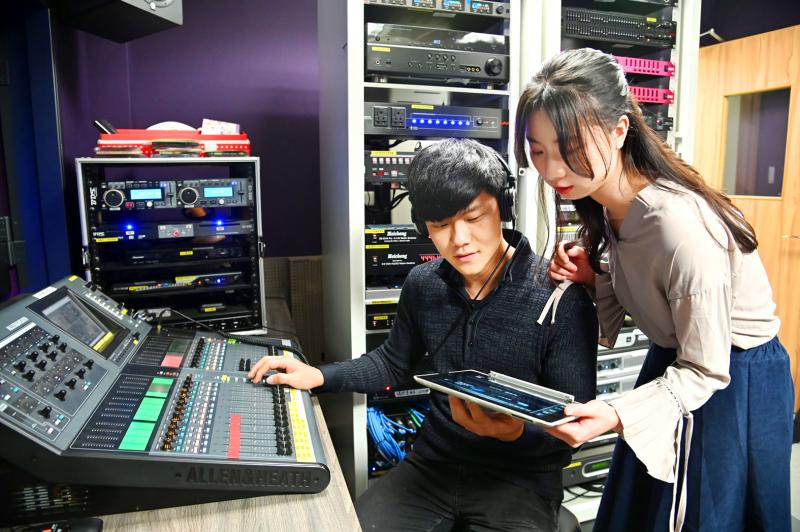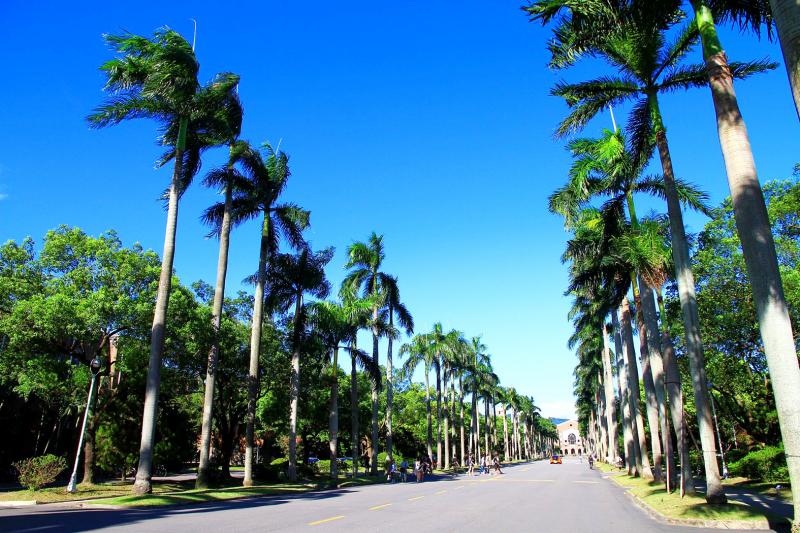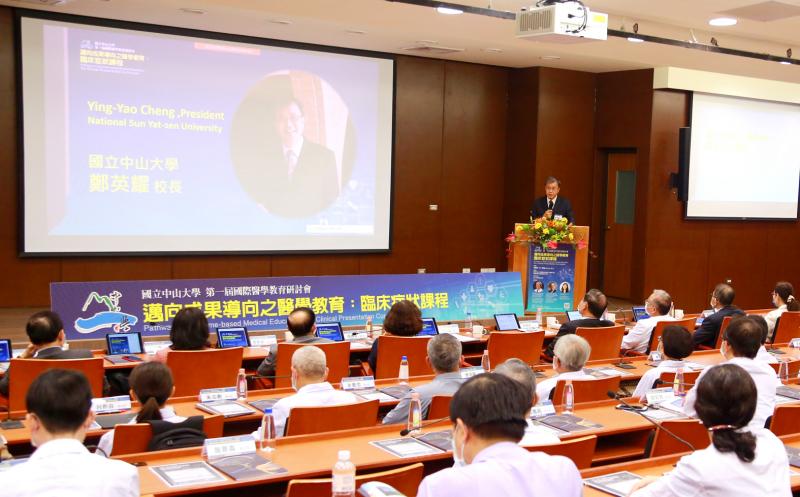This week brought more doleful news on the university front. Ministry of Education (MOE) statistics widely quoted in the media showed that a dozen universities had less than 60 percent enrollment (up from 6 the previous year), while 121 university programs, including 79 graduate programs, had zero students enrolled. The ministry announced that more than 40 schools, from high schools to universities, are on their critical list.
Because MOE subsidies are based on enrollment, schools with low student enrollment receive reduced subsidies from the government, forcing them to close sooner or later.
This outcome had long been predicted, the inevitable result of Taiwan’s low birthrates and surplus of universities. After educational reforms in the mid-1990s, the number of universities boomed. Vocational schools, technological universities and junior colleges upgraded to “universities.”

Photo courtesy of Tsing Hua University
The loss to the nation was profound. Schools with two and five-year programs had a strong record of producing the entrepreneurs who had driven the miracle economy of the 1970s and 1980s. Many of their instructors had come from business, passing on practical skills in engineering and business to students. When these schools upgraded, these people, who typically had no academic background, lost their positions. Meanwhile their students, who could have received useful practical education, instead received an education at schools unprepared for them, which left them unprepared for life.
A second reason universities sprouted like mushrooms was the subsidy program. Construction firms very quickly realized that they could farm subsidies by building universities. The MOE had a strict set of regulations that they had to fulfill — a certain number of students, an array of facilities such as a track and a library and so forth. Once they met those thresholds, the subsidies flowed in.
Funded by taxpayer megabucks, the university would then generate returns via direct payments to the construction firm by the university and in contracts to the parent construction firm for further construction of university facilities. Because money must be returned to the parent company, re-investment in maintaining and upgrading such schools is low.

Photo courtesy of NTU
At one school I was at, officials simply stopped maintaining things, right down to failing to change dead lights. I was only able to get a new light for my own office when a shorted bulb finally caused a fire.
A close friend who interviewed for a university presidency at one of these universities told me that they were required by parent firm officials to institute a program to upgrade the university facilities and education while returning 20 percent of revenues (that’s right, revenues, not net income) to the parent conglomerate. My friend laughed and told them to choose one.
Thus, the oversupply of universities in Taiwan is rooted in government subsidy programs for them. If the central government did not keep private universities liquid with subsidies, many of them would be forced to close. Unwilling to disrupt so many lives by turning off the taps, the government is encouraging these zombie universities to merge, a policy that the universities are fighting.

Photo: Fang Chih-hsien, Taipei Times
Many local private universities had been relying on a flow of students from China to supply them with revenues. This dried up when China ramped up tensions after the election of President Tsai Ing-wen (蔡英文). The Tsai administration had responded with initiatives to bring in students from Southeast Asia and elsewhere under the rubric of the Southbound policy, but the numbers remain limited.
One obstacle to reform is the MOE itself. Regulations minutely govern almost every aspect of employment and instruction. The salaries paid to instructors, tightly controlled by the ministry, are far too low, especially by comparison with international figures. This makes it almost impossible for schools to attract world-class teaching and research talent, while driving the nation’s best academics to move elsewhere.
The immense quantities of paperwork and meetings are another obstacle to upgrades. Many departments are reluctant to hire foreigners because the department administrative workloads are heavy and few foreigners have the Chinese skills to do the paperwork. The result is the familiar ghettoization of foreigners into language programs.
Regulations also drive the oversupply of university departments, especially grad departments. The MOE simply handed down directives requiring universities to open grad schools in certain disciplines. Thus, at one point Taiwan was producing twice as many doctorates as Japan despite having a fifth the population.
Since salaries and expenses are fixed by government mandates, tuition must also be controlled. The government caps tuition at private universities to keep them affordable for low-income families. This seems laudable at first glance.
In Taiwan most students want to go to a public university, where tuition is a pittance and the education and facilities are generally better. Yet typically only well-off local families can afford the intensive education necessary to put a child into a good university.
Hence, the paradox by which Taiwan’s cheap public universities are populated by students from better-off families, while the working class has to send its children to lower quality private universities, often by borrowing money.
Yes, that’s right, in Taiwan, public universities are a subsidy for the rich.
This is exacerbated by the trend in the last couple of decades of locating expensive private schools in “rural” areas, which as “rural schools” have a different and easier quota for placing children in public universities.
A hidden issue, not often identified by commentators, is that the MOE keeps Taiwan universities in a local hothouse: it is difficult to open a branch of a foreign university in Taiwan. Safe from foreign competition, Taiwan’s universities can monopolize the local population, save for those few families wealthy enough to send their children overseas. Since all schools must follow the same curriculum, foreign private high schools are redundant. This has slowed school reform and change across the island.
Bowing to the inevitable, in November the Cabinet approved a draft law regulating the closing of private schools at the senior high and university level. In Taipei, the city permitted schools to raise tuition early in 2019. Something like that will have to happen soon if many universities are to be saved from going under.
Yet research has found that in Taiwan, when school fees rise, birthrates fall. The tuition problem will not be an easy one to fix since in the long run, it makes the problem worse.
Whatever changes, thanks to low birthrates, around half of Taiwan’s private higher education institutions are expected to close in the coming decade. Years ago the government forecast that the number of students enrolled in universities would fall 40 percent between 2013 and 2028, given that Taiwan in the early 2000s had the second lowest fertility rate in the world.
Scarily, Ministry of the Interior statistics showed that Taiwan apparently had more deaths than births in the first half of last year. What this crisis shows is that it is long past time for reforms, not merely of education, but of Taiwan’s suicidal immigration policies.
It’s not just the universities that need more young people.
Long-time resident Michael Turton provides incisive commentary informed by three decades of living in and writing about Taiwan.

That US assistance was a model for Taiwan’s spectacular development success was early recognized by policymakers and analysts. In a report to the US Congress for the fiscal year 1962, former President John F. Kennedy noted Taiwan’s “rapid economic growth,” was “producing a substantial net gain in living.” Kennedy had a stake in Taiwan’s achievements and the US’ official development assistance (ODA) in general: In September 1961, his entreaty to make the 1960s a “decade of development,” and an accompanying proposal for dedicated legislation to this end, had been formalized by congressional passage of the Foreign Assistance Act. Two

Despite the intense sunshine, we were hardly breaking a sweat as we cruised along the flat, dedicated bike lane, well protected from the heat by a canopy of trees. The electric assist on the bikes likely made a difference, too. Far removed from the bustle and noise of the Taichung traffic, we admired the serene rural scenery, making our way over rivers, alongside rice paddies and through pear orchards. Our route for the day covered two bike paths that connect in Fengyuan District (豐原) and are best done together. The Hou-Feng Bike Path (后豐鐵馬道) runs southward from Houli District (后里) while the

March 31 to April 6 On May 13, 1950, National Taiwan University Hospital otolaryngologist Su You-peng (蘇友鵬) was summoned to the director’s office. He thought someone had complained about him practicing the violin at night, but when he entered the room, he knew something was terribly wrong. He saw several burly men who appeared to be government secret agents, and three other resident doctors: internist Hsu Chiang (許強), dermatologist Hu Pao-chen (胡寶珍) and ophthalmologist Hu Hsin-lin (胡鑫麟). They were handcuffed, herded onto two jeeps and taken to the Secrecy Bureau (保密局) for questioning. Su was still in his doctor’s robes at

Mirror mirror on the wall, what’s the fairest Disney live-action remake of them all? Wait, mirror. Hold on a second. Maybe choosing from the likes of Alice in Wonderland (2010), Mulan (2020) and The Lion King (2019) isn’t such a good idea. Mirror, on second thought, what’s on Netflix? Even the most devoted fans would have to acknowledge that these have not been the most illustrious illustrations of Disney magic. At their best (Pete’s Dragon? Cinderella?) they breathe life into old classics that could use a little updating. At their worst, well, blue Will Smith. Given the rapacious rate of remakes in modern